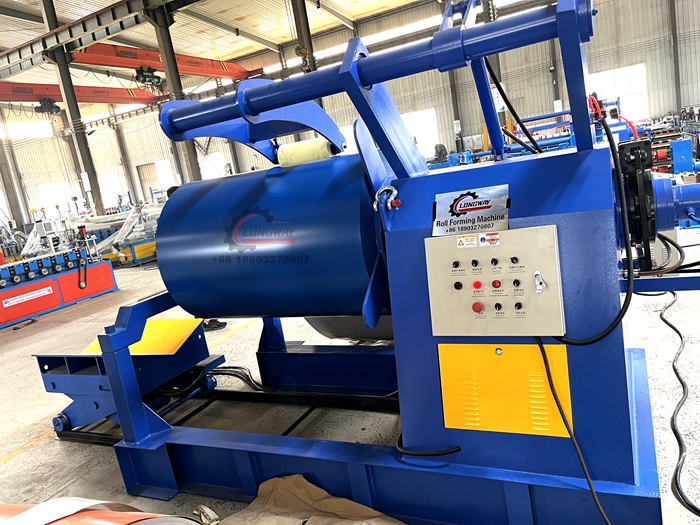Trim Roll Forming Equipment for Efficient Metal Fabrication and Custom Solutions
Understanding the Trim Roll Forming Machine A Key Component in Modern Manufacturing
In today’s fast-paced manufacturing environment, efficiency and precision are paramount. One of the critical pieces of equipment that embodies these qualities is the trim roll forming machine. This advanced machine plays a vital role in producing high-quality metal components, particularly in the construction and automotive industries. In this article, we will explore the workings of trim roll forming machines, their applications, and the benefits they bring to the manufacturing process.
What is a Trim Roll Forming Machine?
A trim roll forming machine is a type of equipment that continuously forms raw metal sheets into desired profiles. This process involves feeding the metal into a series of rollers, each progressively shaping the material until it reaches the finished product. The result is a precisely formed trim or profile that can be used for various applications, such as roofing, siding, or interior fixtures.
Typically, the machine consists of a series of rollers and a driven system that feeds the metal sheet through the rollers. The rollers are meticulously calibrated to apply the right amount of pressure and curvature, ensuring consistency and reducing waste. Additionally, trim roll forming machines can be designed to produce various shapes and sizes, making them incredibly versatile.
Applications of Trim Roll Forming Machines
Trim roll forming machines have become integral in several industries, particularly because of their ability to produce consistent and high-quality products. Some common applications include
1. Construction Industry The most common use of trim roll forming machines is in the construction of buildings and infrastructures. They produce items like metal roofs, wall panels, and gutters, which require durability and precision.
2. Automotive Industry In the automotive sector, trim roll forming machines create components that demand exact specifications and strength. This includes parts like trim pieces, reinforcements, and structural elements.
3. HVAC Systems HVAC manufacturers rely on these machines to produce ductwork and other components that need to efficiently transport air while ensuring energy efficiency.
trim roll forming machine

4. Signage and Display Trim roll forming machines also play a role in creating signage and display materials that require a specific aesthetic and structural integrity.
Benefits of Using Trim Roll Forming Machines
The adoption of trim roll forming machines offers numerous advantages to manufacturers, enhancing their productivity and product quality. Here are some key benefits
1. Efficiency Trim roll forming machines allow for continuous production, significantly reducing manufacturing time compared to traditional forming methods.
2. Material Utilization The precision of these machines minimizes waste and optimizes material use. This leads to cost savings and a lower environmental impact.
3. Customization Manufacturers can design and produce a wide range of profiles and shapes, meeting specific customer needs without the need for extensive tooling changes.
4. Consistency and Quality The automated nature of roll forming ensures that each piece is produced with uniform quality and dimensions, reducing the risk of defects.
5. Reduced Labor Costs With automation, the need for manual labor is decreased, allowing manufacturers to reallocate resources to other areas of production.
Conclusion
The trim roll forming machine is a pivotal technology in modern manufacturing, delivering efficiency, precision, and versatility. Its applications across various industries highlight its importance in producing components that meet the high standards of today’s market demands. As technology continues to evolve, we can expect further advancements in roll forming processes—enhancing productivity, improving quality, and reducing costs even more. For manufacturers aiming to stay competitive, investing in a trim roll forming machine is not merely an option; it’s a necessity.
-
Roof Panel Machines: Buying Guide, Types, and PricingNewsJul.04, 2025
-
Purlin Machines: Types, Features, and Pricing GuideNewsJul.04, 2025
-
Metal Embossing Machines: Types, Applications, and Buying GuideNewsJul.04, 2025
-
Gutter Machines: Features, Types, and Cost BreakdownNewsJul.04, 2025
-
Cut to Length Line: Overview, Equipment, and Buying GuideNewsJul.04, 2025
-
Auto Stacker: Features, Applications, and Cost BreakdownNewsJul.04, 2025
-
Top Drywall Profile Machine Models for SaleNewsJun.05, 2025








